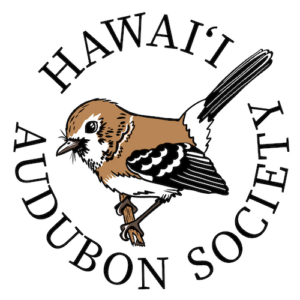About Us
Our Mission
To foster community values that result in the protection and restoration of native wildlife and ecosystems and conservation of natural resources through education, science, and advocacy in Hawai’i and the Pacific.
Our Islands' Isolation
The Hawaiian Islands host a remarkable number of
endemic plants and animals, their habitats ranging from
coral reefs to volcanic mountains. Over centuries, people
accidentally and intentionally introduced countless
nonnative species to the islands to suit human needs,
desires, and whims, often to the detriment of Hawaiʻi’s
unique native species due to associated diseases, predation,
and competition for resources. We focus on preserving and
protecting the islands’ native species and habitats, and
providing information for birders and nature enthusiasts.
The Hawaiian Islands host a remarkable number of endemic plants and animals, their habitats ranging from coral reefs to volcanic mountains. Over centuries, people accidentally and intentionally introduced countless nonnative species to the islands to suit human needs, desires, and whims, often to the detriment of Hawaiʻi’s
unique native species due to associated diseases, predation,
and competition for resources. We focus on preserving and protecting the islands’ native species and habitats, and providing information for birders and nature enthusiasts.
Background & History
The Hawai’i Audubon Society was established locally in 1939 by
a small group of dedicated birders to further the protection
and conservation of Hawai’i’s native wildlife and ecosystems.
The first meeting of the Honolulu Audubon Society was held in March 1939. In May of that year, a constitution
and by-laws were adopted and officers were elected. This was
the result of a letter in January 1939 to a local newspaper by
Charles M. Dunn “…asking all bird lovers to meet at the Library
of Hawai’i with a view to forming a branch of the National
Association of Audubon Societies”. In November of 1939, the
first issue of the ‘Elepaio, the “Official Organ of the Honolulu
Audubon Society”, was published as Volume 1, Number 1.
After seven years, the Board of Directors changed the name
of the organization to the Hawaii Audubon Society (HAS)”…to
designate more clearly the scope of our interests” (‘Elepaio,
Vol. 7, No. 1, July, 1946). They hoped that, with the name
change, the organization would draw members from all the
islands of the State who were interested in wildlife
conservation.
HAS became a certified chapter of the National Audubon
Society (NAS) in 1978, but functions independently from NAS in all financial, policy, and programmatic matter as a 501(c)(3) nonprofit organization.
In 2023, in an effort to honor the Hawaiian culture and support perpetuation of the Hawaiian language, the Board of Directors decided to add an ʻokina to the organization’s name, which is now the Hawaiʻi Audubon Society.
